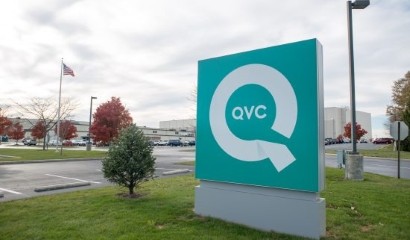First Brands’ financial tune up raised red flags that Wall Street overlooked
When a credit fund sought to provide factoring financing and invest in the credit facilities of First Brands a few years ago, the fund made a routine request to access data rooms for each of the facilities. The response was swift and telling.
“We were told no very quickly after we made the requests,” said an investor at the fund. “Probably because they didn’t want us to compare information in the two different data rooms. We thought it’s an instant red flag.”
For years, First Brands has been recognized as one of the largest makers of automotive aftermarket parts like windshield wipers, pumps and brakes with solid earnings numbers and a healthy leverage level.
When the company attempted to tap markets in August to issue USD 6bn in debt, it marketed an attractive financial picture with net first lien leverage of just 1.9x, based on LTM pro forma adjusted EBITDA of USD 2bn as of the first quarter of 2025, total first lien debt of USD 4.87bn and cash equivalents of USD 986m.
Beneath the polished financial metrics, investors have long been aware of red flags that preceded the company’s rapid collapse this month, including the company’s opaque off-balance-sheet factor financing and the unknown background of CEO Patrick James.
“The numbers were always too good to be true,” said another buysider.
Despite the concerns, institutional investors swallowed their uneasiness in the face of the attractive returns offered by First Brands as it issued successively larger term loan facilities to finance the acquisition of dozens of auto parts brands.
“It was a high coupon investment, which was super attractive for CLOs,” a third buysider explained. “The company had a good track record before this, good valuation. No one realized it could be this way.”
A representative for First Brands didn’t reply to requests for comment.
Spinning out of control
Cracks at First Brands started to appear in August when it didn’t complete the refinancing led by Jefferies. The refi failed after investors demanded the company conduct a quality of earnings report and an expanded second lien facility attracted limited demand, as reported.
Along with questions about First Brands’ factoring program, investors scrutinized First Brands’ lack of an equity sponsor and heavy adjustments to its financials that by some estimates accounted for up to 60% of reported EBITDA, sources told Debtwire at the time. Removing addbacks to EBITDA tied to acquisitions, leverage would stand at 3x through the first lien and 4x through the second line, one source estimated.
But the situation remained relatively stable at First Brands’ existing term loans until Friday, 12 September, when the Financial Times reported that Apollo had taken a position betting against the credit months earlier, sending trading levels plummeting.
The situation accelerated the next week as the term loans continued to fall, and it emerged that company and top creditors had hired advisors to discuss a potential restructuring.
Top CLO holders like CIFC looked to trim their position amid the panic, according to two buysiders and a trader. Other CLO managers holding its term loans prior to the turmoil included PGIM, UBS, Blackstone and AGL, according to CLO-I data. UBS and PIGM declined to comment. Representatives for the other managers didn’t return requests for comment.
By this week least one member of a steering committee of creditors was headed for the exit by selling its position with a so-called big boy letter that alerted buyers it held confidential information, as reported. First Brands’ USD 1.7bn term loan due 2027 was quoted at 36.5/40.5 on Friday, down from the high 90s in early September, according to Markit.
“Yes, [lenders] were aware of some problems,” said the second buysider. “But when the Apollo news came out and the loan tanked, the company wasn’t behaving like a good one. If you have all that cash and no problems, why would you suddenly advisor up and get restricted with some lenders? The fact pattern here isn’t good.”
Vicious cycle
Central to First Brands’ business model is factoring, an off-balance-sheet financing mechanism that allows a company to collect cash on sales of goods much faster than it receives payment on the receivables. Market participants also believe that First Brands relied on reverse factoring, or supply chain finance, a form of financing that allowed First Brands to delay its cash outlays to its own suppliers.
While the practice didn’t initially raise eyebrows, few understood the sheer scale of it.
“It is a bit of a black box,” admitted a fourth buysider, who thinks there can still be real value in some of the company’s underlying assets. Some investors buying into the credit recently hope that the businesses First Brands acquired over time have real value since they were once held by private equity firms, as reported.
Factoring is a common practice in the aftermarket auto parts industry where major retailers like AutoZone have increasingly pushed suppliers for extended payment terms. AutoZone said that as of 10 May it had USD 5.2bn in supplier obligations under factoring programs. Its accounts payable to inventory ratio stood at 116%, according to an SEC filing.
Average days outstanding on accounts receivables for auto parts suppliers have grown from 37 days to 276 days since 2012, according to data from Raistone, a provider of factoring to auto parts companies including First Brands.
When interest rates started to rise in 2022, the industry dynamics created a vicious cycle for the businesses First Brands acquired, according to a private equity executive who invests in the space.
“They’ve all been hurting badly with this shift from customers like AutoZone demanding one-year terms,” the executive said. “As rates go up, the cost of discounting your receivables goes up, the amount you get paid goes down and [First Brands’] own cost of debt is going up.”
Now if factoring providers lose confidence in receivables created by First Brands, they may pull back on buying them, creating a cash crunch, the executive said. “If they stop buying those receivables, what will fund the cash into First Brands to pay its vendors?” he said.
A loan listed as “Raistone – First Brands Supply Chain Finance Program” was due on 24 September and a second on 1 October, according to an SEC filing by the Ellington Income Opportunities Fund on 30 June.
First Brands is facing challenges beyond higher rates and factoring. The Trump administration’s tariff policies are forcing the company to burn cash, according to S&P Global Ratings, which notes it ramped up inventory ahead of the tariff announcement this spring and is investing funds to relocate a business to North America.
The credit rating agency said that it expects First Brands to have negative cash flow for the next several quarters after a substantial cash flow deficit in the second quarter. Working capital outflows have further been pressured by suppliers exiting its supplier finance program, a trend that may grow if more suppliers exit or request faster payment, S&P warned.
Even as other companies’ bonds and loans were hit by President Donald Trump’s Liberation Day tariff announcement in early April, though, First Brands’ term loans only wobbled with quotes on the first lien just falling from around 94 to below 90, according to Markit. The loans quickly stabilized.
Margin questions
Perhaps giving some investors comfort was First Brands’ robust margins, which it reported at levels that exceeded even some investment grade-rated auto parts companies, according to Fitch.
But some of the sources said the margins were almost too good to be true in the aftermarket auto parts industry, especially since First Brands acquired what some market participants consider low quality businesses in recent year.
The acquisition spree has kept investors wondering if First Brands was creating genuine value, or if it was simply assembling a “bigger rockpile” of distressed assets.
“A bigger rockpile is no better than a little rockpile,” said the private equity executive in the auto space.
“They bought things no one wanted to buy for years, and they may be fantastic operators, but they can’t fight the challenges they have,” said the executive.
Or as the second buysider put it: “The issue is how do they keep buying awful businesses at 3x and instantaneously these businesses look like amazing [investment grade] businesses.”
One former executive at a company First Brands acquired has told investors that they questioned First Brands’ accounting practices, according to another buysider.
By the second quarter, First Brands margins were starting to fall. The company initially reported flash numbers, then later reported reduced figures after removing credit for a not completed acquisition and rebates, said two sources familiar with the matter.
Actual 2Q25 revenue and EBITDA were USD 1.3bn and USD 355m, respectively, a nearly 28% margin compared to a 35% margin in 2Q24 and 33% in 2Q23, according to the sources. First Brands told investors its revenue was reported “as-if-owned” to account for acquisitions.
First Brands is now expected to file for bankruptcy as soon as Sunday with an over USD 1bn debtor-in-possession financing provided by existing creditors and no agreement in place about how the company should be restructured, Debtwire was first to report on Thursday.
High on stakeholders’ agenda for the case is significant discovery into First Brands’ past practices.











